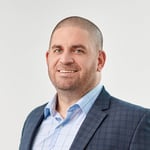Customer satisfaction is a key indicator of business health and overall success, so it’s crucial for technology companies to find a customer experience (CX) solution that is agile, adaptable and customizable. In the first of this three-part series, Antonio Masis, Vice President of Global Customer Management Services and the General Manager of the Costa Rica location for Shyft Global Services, sits down with Charlie Mitchell, Senior Editor at CX Today, to discuss the customer experience and benefits of outsourcing to a managed service provider.
Finding an outsourcing partner who complements your needs can be challenging, but Masis walks through some key factors to consider when outsourcing your customer management services to a trusted technology services partner.
Q&A Part 1: CX Outsourcing Challenges and Best Practices
The following interview was originally published on CX Today on May 24, 2024 in video format.
Mitchell: I’m excited to get under the hood into the magical world of customer experience outsourcing. What are some of the most common business challenges that cause companies to consider companies like Shyft for customer experience outsourcing?
Masis: When talking with original equipment manufacturers (OEMs), we always look at the long tail of their business as a way to support their ongoing growth. Generally, OEMs do a great job of supporting their top 20% of customers that drive 80% of their results. Where Shyft comes in is managing that “unmanaged” space where they may struggle to find budget or resources to manage thousands of customers spread across multiple geographies.
We’ve found a way — kind of a secret formula — to integrate a team that can really drive new streams of revenue and growth for our customers, which we specialize in managing for them. And we can do it in multiple languages around the globe, and this opens up many other opportunities to scale their business as we collectively advance. If you look at some of the case studies we’ve published over the years, the bread and butter [in CX outsourcing] is really that long tail space of customers and resellers for OEMs.
Mitchell: It’ll be interesting to dive a bit deeper into that secret formula as the conversation goes on. But there’s many similar businesses within the outsourcing space. Maybe the next best question is: what are some qualities companies should be conscious of when selecting an outsourcing partner?
Masis: That’s a great question, because that’s so important. When you think about the qualities that you have to engage with when you’re selecting an outsourced partner, the first thing I always go back to is that OEMs are always looking to cut costs, so cost optimization should be a part of that.
But at Shyft, we consider ourselves advisors of our OEM partners, and what we recommend to them is to also look at the culture of the provider that they’re looking to onboard, meaning, these people are going to be representing your brand, so they have to be a great cultural fit with your mission and vision as well as in the way they execute and their value set. They have to align really well with your internal organization — that’s one thing that doesn’t show up on a spreadsheet but is critical to deliver the customer experience we’re talking about.
I think [another important consideration] is the product portfolio and services portfolio that the [potential outsourcing partner] has to be able to scale your business. We talked about the long tail and the customer management part of it, but the really exciting thing about Shyft Global Services is that we are uniquely primed with a diverse set of services that supports the full customer lifecycle and the full product lifecycle. We can do everything — global repair services, supply chain management, field services, customer management services and integration services.
You can start in customer management, but then you can scale your business with the results we provide through our suite of additional services. It fits perfectly into the journey of an OEM to bring their products to market, and our customers give us fantastic feedback about how we integrate with their overall organization.
Mitchell: I think those are two really great points. First of all, the culture, and then to look beyond your requirements for right now to assess the broader portfolio to make sure it fits with your longer-term needs. I think those are two really great considerations for companies.
Mitchell: Moving on from considerations, what would you say are some best practices companies can follow to help ensure success in their customer experience outsourcing partnership?
Masis: The first thing we always recommend to OEMs to ensure our program is successful with them is the engagement, especially at the executive level. We want the executives to be engaged with us so that our organization feels like they’re a true extension. We’re not just seamless in the way we operate, but it’s also about making sure we’re hearing the message straight from the OEM’s vice president, president, senior vice president, etc. That’s something we work really hard toward as an executive team in order to create those long-lasting relationships.
I think [another best practice], which I talked about in the previous question, is that we never want to just set up a program and let it run. We want to talk about, even from the initial stages of our relationship, what would “wave one,” “wave two” or “wave three” look like? How can we take this to the next level?
If you look at our Lenovo case study and Extreme Networks case study, we started with a really small sample of their business, but we were able to scale these into multiple-year agreements and to the point where we’re driving much more than when we started. I think that’s what’s really exciting about our model — it’s 100% flexible and it’s custom-built. We don’t have two programs that act or think alike because we build them in the image of the OEM as a true extension of them.
The way this succeeds is that once we produce results, we’ve already had a discussion about what we would do at step two, three, four, etc. and every single fiscal year, we’re taking new ideas to the table on how we can do even more for the OEM, whether it’s with what we already have invested in and transforming that or adapting and adding even more. When you look at our customer management case studies, they’ve always started with a small, flexible, custom-sized model, and then we can scale that — whether it’s within customer management or one of our other service organizations (e.g., repair, field services, supply chain or integration).
Mitchell: It’s really great that you’re not looking to boil the ocean right away. Rather, you’re establishing a strong relationship and then building from that. I think that’s some really great insight into the secret formula at Shyft.
Ready for Flexible, Scalable CX Outsourcing?
Scalability and overall agility of outsourced CX solutions are critical in determining the longevity and quality of customer management partnerships. At Shyft, we strive to address the needs of our customers every step of the way, even looking ahead to anticipate those needs before they arise.
In part two, discover Shyft’s secret to standing up solutions in a short period of time to reduce customers’ time to revenue and expedite the journey to success.
Learn more about CX outsourcing best practices, case studies and the future of CX outsourcing in the full CX Today interview.
About the Author
 Antonio Masis serves as the Vice President of Global Customer Management Services and the General Manager of the Costa Rica location for Shyft Global Services, a division of TD SYNNEX. He has been with the company since 2009 and has more than 15 years of experience as a business development leader, with a focus on directing operations, implementing sales strategies and managing outsource agreements.
Antonio Masis serves as the Vice President of Global Customer Management Services and the General Manager of the Costa Rica location for Shyft Global Services, a division of TD SYNNEX. He has been with the company since 2009 and has more than 15 years of experience as a business development leader, with a focus on directing operations, implementing sales strategies and managing outsource agreements.





